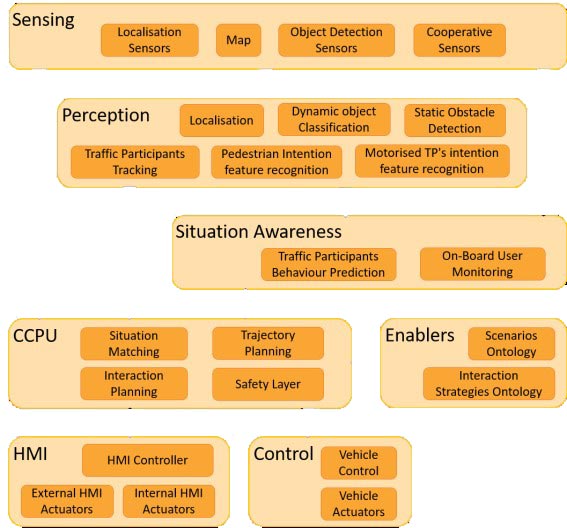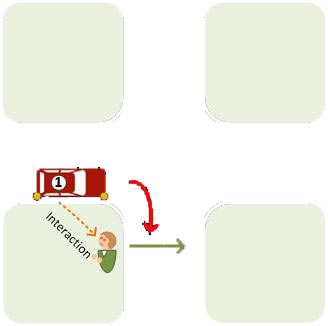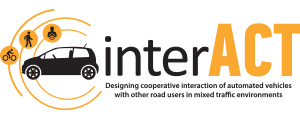interACT scenarios
Objectives
In the beginning of the project, we focused on the selection of suitable use cases and scenarios for the interACT project. One essential task was to reduce the complexity of the traffic environment to a manageable number of relevant use cases and scenarios that an Automated Vehicle could be confronted with. These use cases were used to extract the requirements that need to be satisfied by the interACT components and to propose the functional architecture to be used as basis for the development work. Technical and Human Factors requirements as well as legal, security, ethical and safety issues was taken into account. These actions resulted in the overall interACT system architecture and all interfaces between the software and hardware modules.
Technical Approach
Regarding the use cases definition, we started with a common definition of relevant interACT use cases and scenarios among all industrial and academic consortium members. After that, use cases and scenarios have been selected using a step-wise process of intensive discussions within the consortium. Starting with some open brain-storming discussions the use cases were aggregated and rated by the partners against several criteria (such as relevance for safety, need for interaction behavior etc.) to agree on the most relevant ones. Regarding the system architecture, requirements were collected and categorized by the consortium. As a next step, these categories were assigned to functional blocks. As a final step, the functional blocks were decomposed into components.


Main results
The consortium defined four “must-have” use cases that were of highest relevance. These use cases had to be covered by research and technical developments in all technical WPs and evaluated and demonstrated in the interACT demonstrator vehicles and simulators at the end of the project. These are the “must-have” use cases: 1) React to crossing non-motorised traffic participants (TP) at crossings without traffic light, 2) React to an ambiguous situation at an unsignalised intersection, 3) React to non-motorised TP at a parking space, 4) React to vehicles at a parking space.
A total of 101 requirements have been collected, categorised in General (9.9%), Operational (32.67%), Perception (22.77%), Human-Factor related (30.69%) and Actuation (3.96%) requirements. These five categories of requirements were then assigned seven functional blocks, namely Sensing, Perception, Situation Awareness, Communication and Cooperation Planning Unit, HMI, Control and Enablers. The functional blocks were decomposed into components which define the technical architecture of the interACT project.
Read More
Wilbrink, M., Schieben, A., Markowski, R. et. al “interACT D1.1 Definition of interACT use cases and scenarios” (2018)

